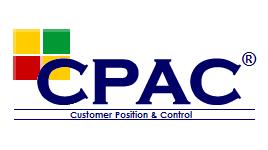
CPAC®: A tool for Maximizing Project and Customer Profitability
Once a company becomes lean, the ongoing challenge is to stay lean as customer needs evolve. Company-wide operational measurements become an increasingly important addition to the financial picture. Using only financial measurements such as the Weighted Average Cost of Capital (WACC) does not give an operational overview, and traditional measures such as Activity Based Costing (ABC), in addition to being cumbersome and inaccurate, often focus only on variable costs. As the cost structure of a wholesale-distributor is primarily fixed cost, operational measurements need to recognize resource utilization: how effectively are the resources being applied?
One such measurement is CPAC® (Customer Positioning and Control), a simple, reliable method for measuring the requirements in terms of both cost and effort, necessary to meet the demands of your customers.
CPAC® measures the impact of these customer demands on the company’s overall operational profitability. Branches, divisions, projects, or customers can be easily compared. Areas of strength and weakness become clearly visible. Services can be priced according to costs. As plans are implemented to address areas of insufficient profits or significant costs, CPAC® provides a method for monitoring the effect of those changes over time.
CPAC®‘s Four Quadrant Positioning
CPAC® uses a four quadrant positioning method to evaluate a customer or project based on recognized profits and revenues. The components of the operation are divided into cost codes according to the type of work. The cost codes are positioned according to their draw on the effort and cost needed to address each specific end user’s demands on the distributor’s resources. CPAC® will identify the cost drivers causing that customer to be positioned poorly. Each customer (end user) is visibly and objectively positioned according to its impact on both time and cost.
Reference points for the quadrant positioning can be realized in a number of ways:
CPAC®: Customer Positioning and Control
CPAC®’s flexibility also allows a number of other applications that easily follow the basic CPAC® guidelines of positioning and trend monitoring. Among these include:
- Making relative comparisons
- What factors make one customer better than another?
- How do customers compare with respect to realized profits as a return for effort and cost?
- Comparing a project or customer to a template or “signature”
- What configuration makes a good customer?
- Grouping of work
- Which customers, types of work, , size of projects, etc. realize insufficient profits or revenues as a return for effort and work?
- Resource evaluation
- Where might additional resources need to be deployed?
- Which resources are being used to capacity?
- Which resources are being under-utilized?
Please feel free to email (info@mca.net) or call us at (810) 232-9797 to discuss how we may be of service to your chapter or if you would like more information on the services we offer.


